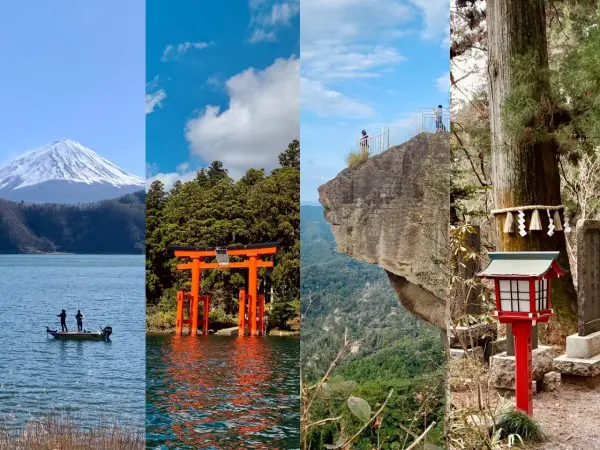
If you want to experience Japan’s incredible nature, soak in hot springs, enjoy the best views of Mount Fuji or hike through old forests – favorite Shinto spirits playgrounds, you might want to plan one of the below days trip from Tokyo.
Almost 70% of Japan is covered with forests, mountains and volcanoes, so without seeing a bit of nature you will not fully experience this beautiful country. Besides, a short hike, a scenic cable car ride or a bit of relax at a lake with splendid Mount Fuji views, will help you recharge batteries.
In this blog you will learn about 6 easy day trips from Tokyo for nature lovers in less than 2 hrs. Here we go!
What's in this blog post?
INTRODUCTION
HAKONE: Perhaps the most varied day trip from Tokyo and complex experience at the same time. Hot springs, an active volcano, cable car rides, a boat cruise on a scenic lake, art museums (including Picasso!) and views of Mount Fuji, if you are lucky.
MOUNT TAKAO: Suited for those with little time, who want to spend a day in nature. The shortest day-trip from Tokyo (50 minutes by train) offers a cable car (or lift chair) ride and a picturesque trail, an interesting temple and a view of Mount Fuji from the top.
MOUNT TSUKUBA: One of the “100 Most Famous Japanese Mountains” provides a typical Japanese outdoor experience. Easy hiking trail, a cable car ride to reach the double summit shrouded in ancient legends and an interesting temple. All without the international crowds.
LAKE KAWAGUCHI: The most spectacular views of Mount Fuji but not only. A picturesque lake with a famous pagoda, sake brewery, blooming flowers or incredible autumn colours depending on the season you go.
NOKOGIRIYAMA: Sawtooth Mountain, a giant stone-carved Buddha and the ocean views on the rarely visited by foreign tourists and more remote Chiba Peninsula.
MOUNT ONO: There is no cable car, no souvenir shops and no historical sites and no crowds. You come here for nature: a beautiful hiking trail and close-up Mount Fuji views.
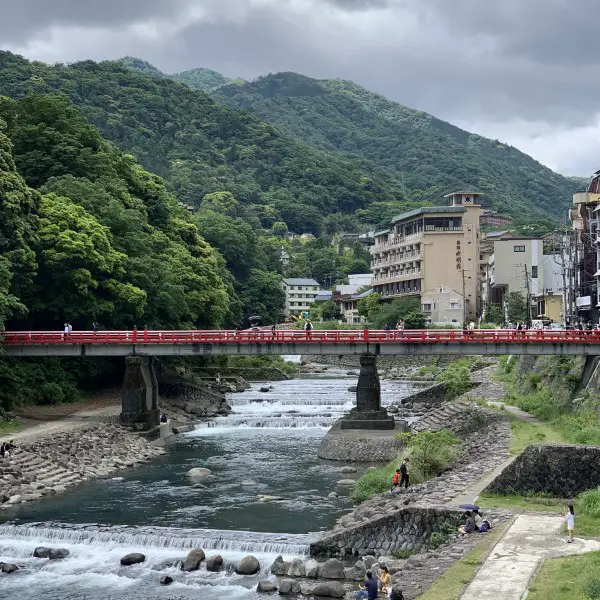
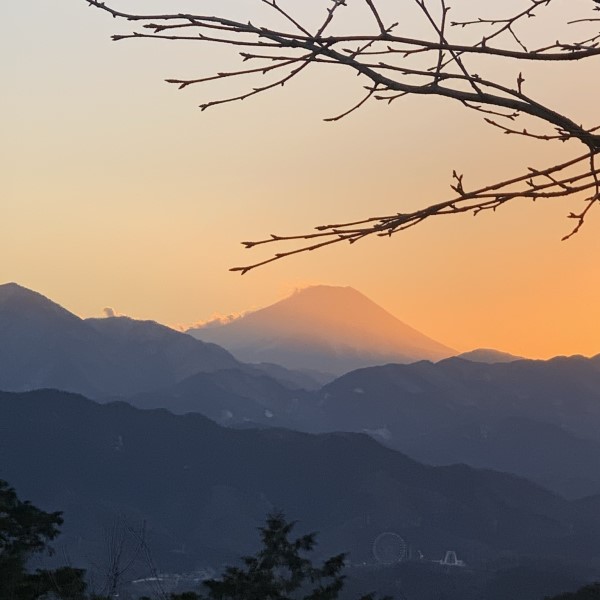
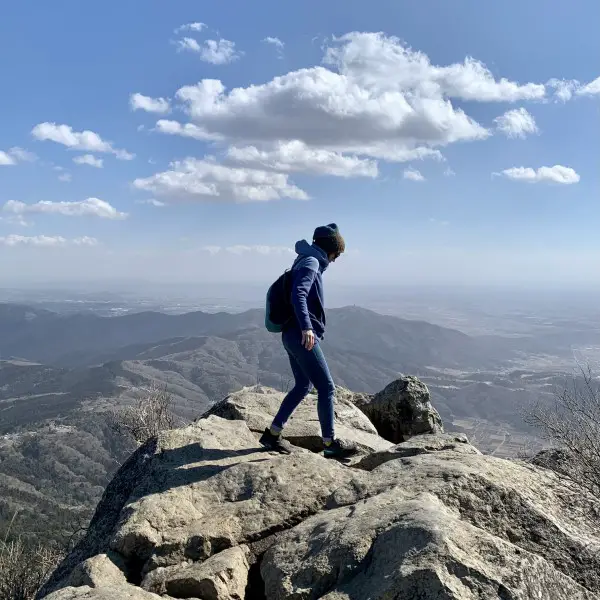
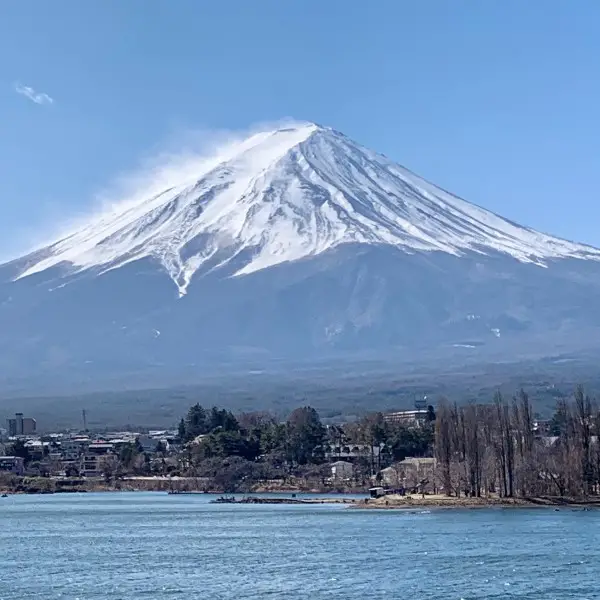
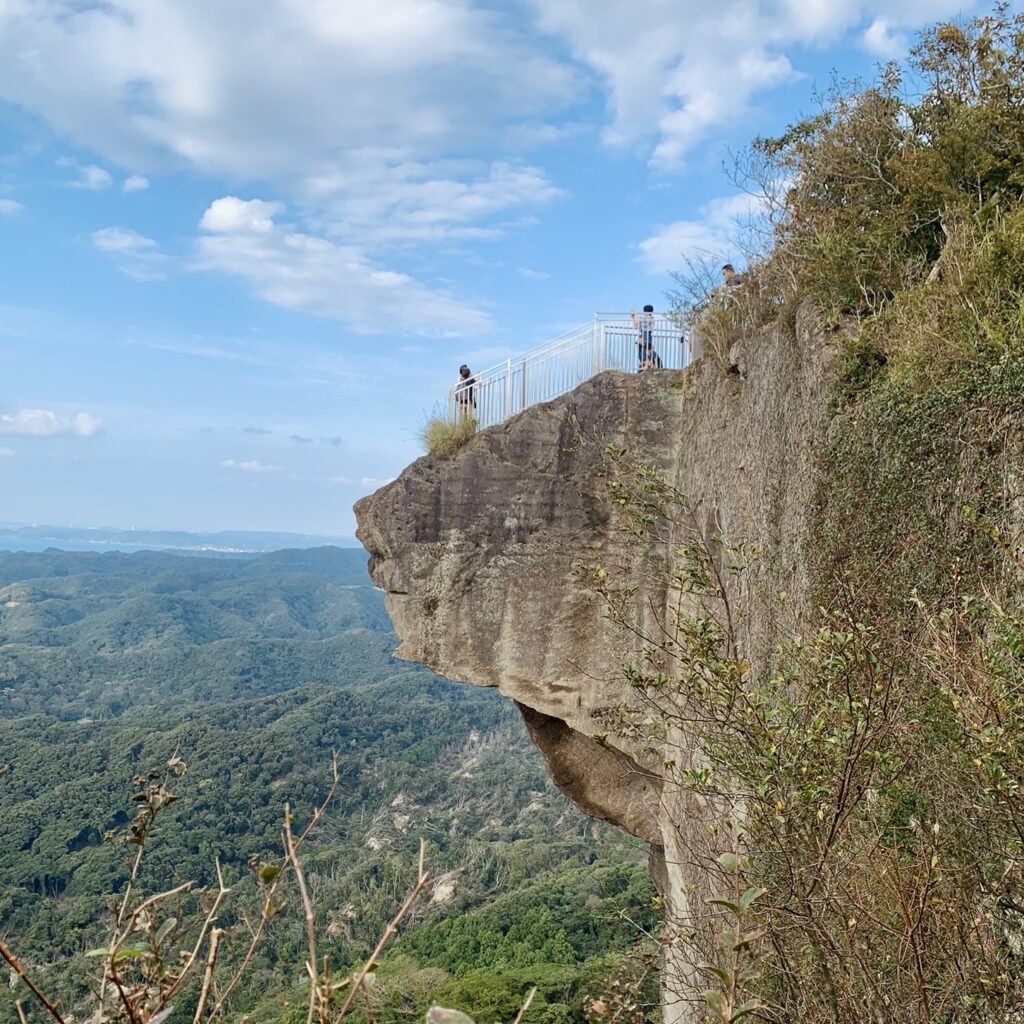
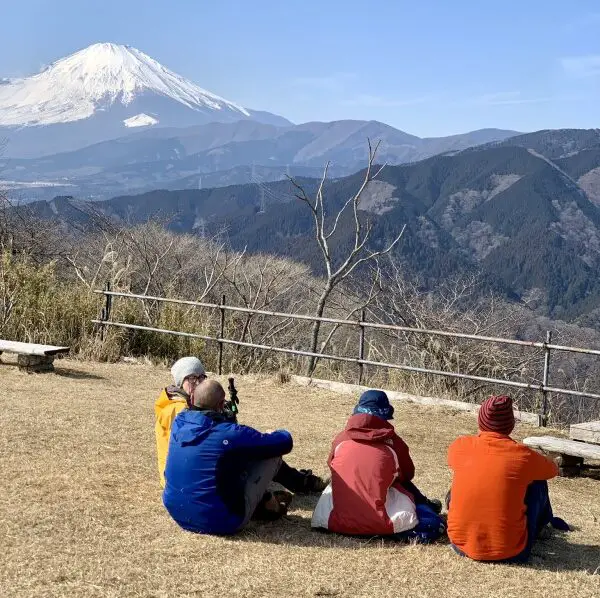
1. HAKONE: the most popular choice
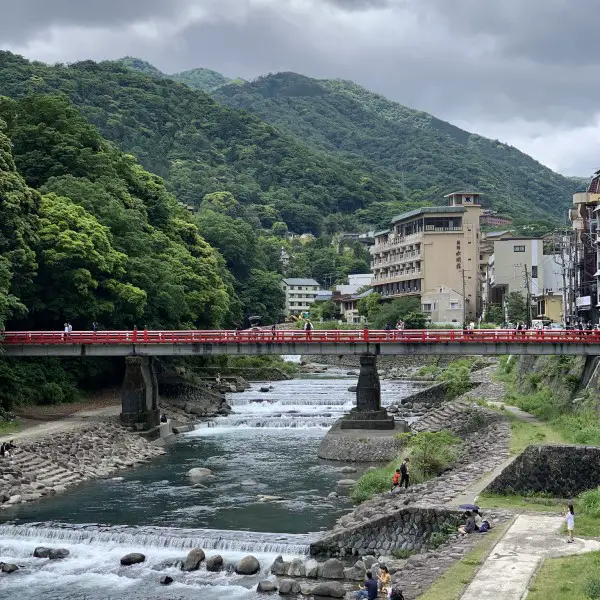
Hakone is the most popular short day-trip from Tokyo. Famous hot springs, sulphurous fumes coming from an active volcano, many art museums – even Picasso (!), traces of history along the ancient Tokaido road frequented by samurai and merchants in Edo period, scenic train rides and cable cars, and Mount Fuji lurking over the stunning Lake Ashinoko and more. You can stay in Hakone for a few days and you will never get bored.
However if you only have one day in Hakone here are the top 3 things to do:
Volcanic valley of Owakudani
The spectacular area of Owakudani was formed during the last eruption of Mount Hakone 3,000 years ago. Despite its remote location in an active volcanic zone, access via a picturesque cable car is extremely convenient. In order to enjoy a similar lunar scenery in Indonesia, you have to hike the mountain trail for hours. In Japan things are easy! Owakudani offers unforgettable views as well as the opportunity to taste black eggs cooked in hot springs. Eating a blackened sulphur egg is believed to extend life by seven years. I ate probably three 🙂
Relaxing boat cruise on Lake Ashinoko
The highlight of the 30-min boat trip on Lake Ashinoko is the view of Mount Fuji, the symbol of Hakone, the image on the label of my beer. Even if you are not lucky with the weather (Hakone is often cloudy and the view of Mount Fuji is not guaranteed), the scenery – the surrounding hills, small fishing boats, picturesque red torii on the lake shore and the relaxing atmosphere on the boat make it an unforgettable experience.
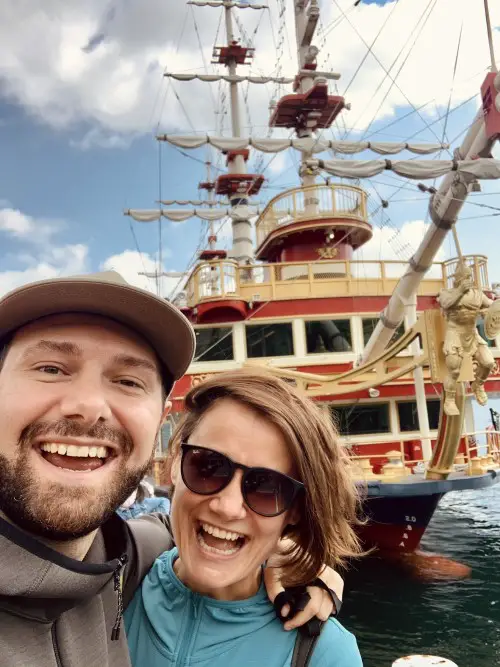
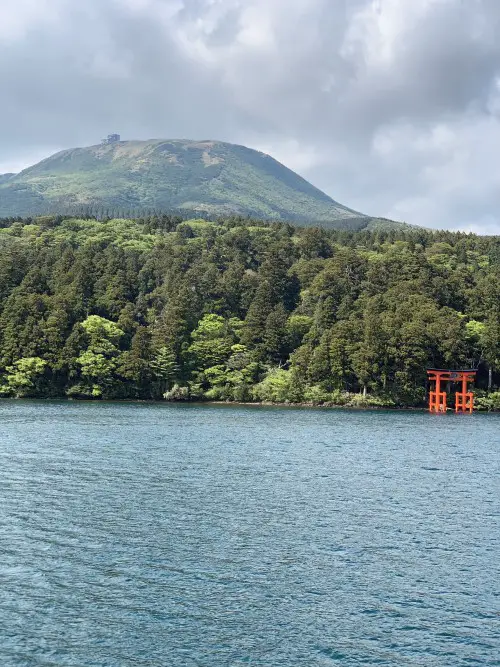
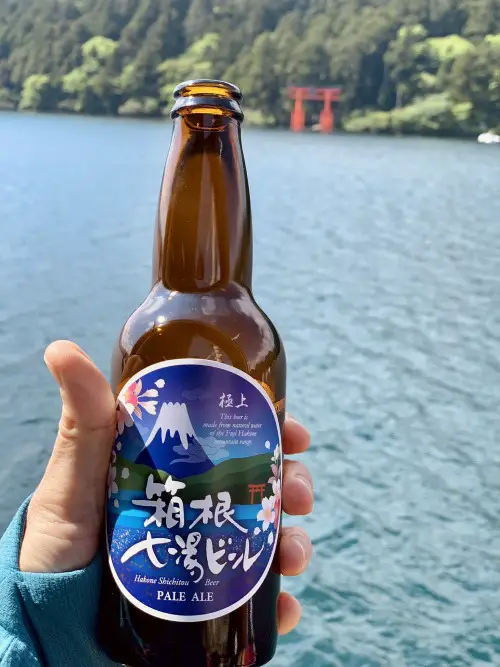
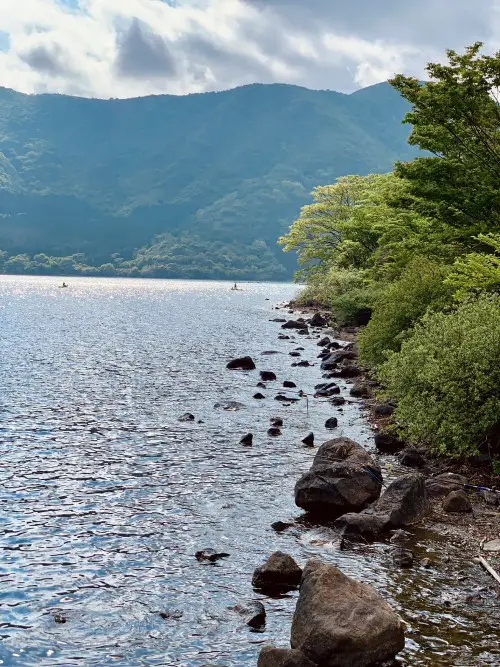
Renting a swan boat is also a so much fun! It's probably the best way to get closer to the famous torii gate.
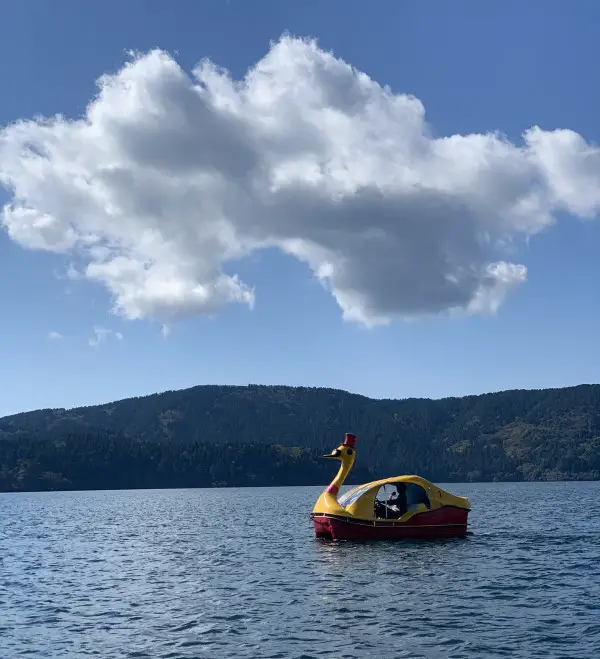
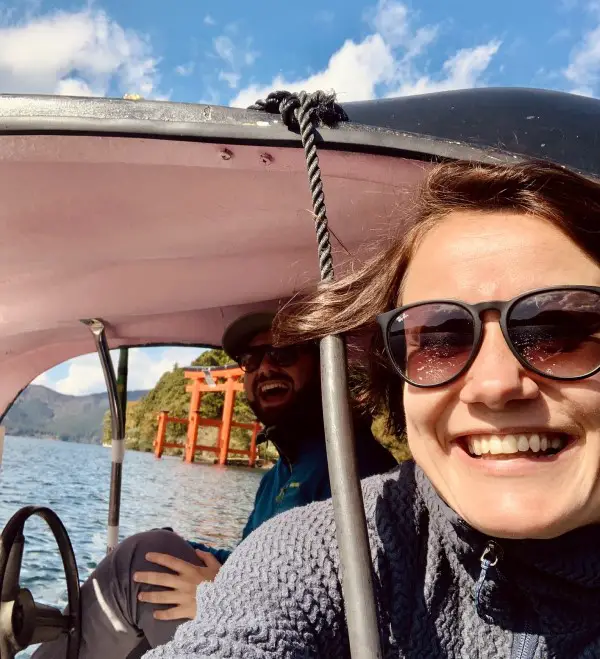
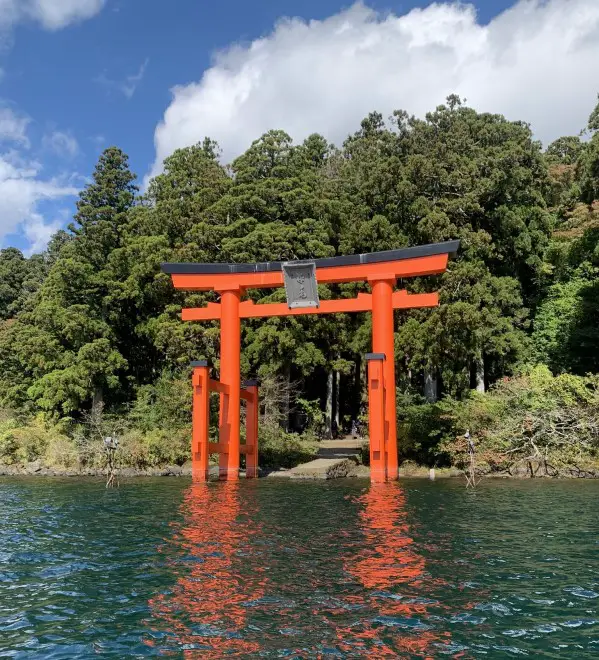
Finish your day to at famous Japanese hot springs
Hakone is one of the most popular hot spring resorts in Japan. If you want to try traditional Japanese onsen in a beautiful outdoor setting, it is probably your best and easiest choice. You will find many great public baths and ryokans that are available not only for their guests but also to daytime visitors (for a fee). I went twice to Hakone Yuryo, conveniently located by the Hakone-Yumoto station and loved its outdoor bath and sauna!
A bit more of Hakone
Getting to Hakone from Tokyo
Hakone, located in Kanagawa Prefecture, about 100 km west of Tokyo, is easily accessible by various trains. The most convenient connections are:
Shinjuku Station to Hakone-Yumoto Station (Odakyu Railway):
- “Romance Car” limited express: 85 min (~2500 JPY);
- normal trains (kyuko): 120 min (~1250 JPY) with a transfer at Odawara.
If you have JR Pass, you can travel from Tokyo Station to Odawara Station by shinkansen (35 min), covered by JR Pass. From Odawara, take a local train or bus to Hakone-Yumoto Station (20 min).
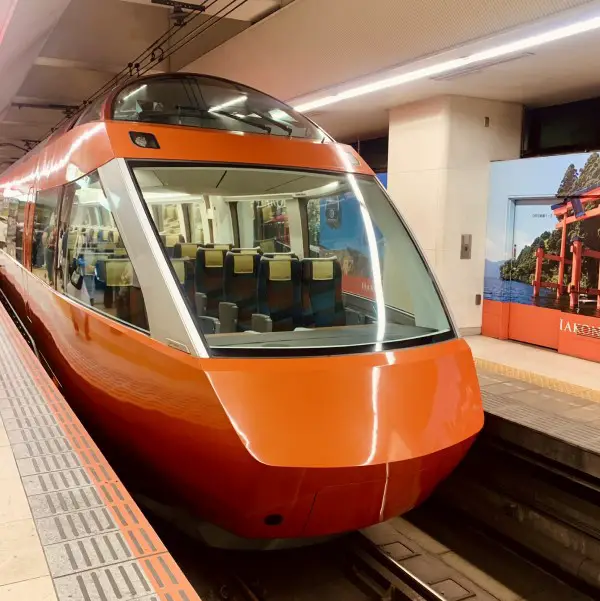
Get the Hakone Free Pass, which includes unlimited use of selected trains, cable cars, ropeways, boats and buses in Hakone. Journeys in the Hakone area are not covered by JR PASS. There are two options for the Hakone Free Pass. It can only include the Hakone area from Odawara or the round trip from Tokyo (“Romance Car” requires surcharge) as well.
More about the Hakone Free Pass: HERE
More about Hakone: Hakone – Japan Guide
2. MOUNT TAKAO: the easiest access

Mount Takao (Takaosan) is the most accessible place from Tokyo to enjoy the beautiful mountain scenery, explore an attractive temple and do little hiking. On clear days, the summit offers views of Mount Fuji. It’s the shortest and easiest day trip from Tokyo for nature lovers.
Mount Takao hike details
Most people take the wide, paved path (trail # 1) leading to the top of Mount Takao (599 m). The route passes by the temple and all major tourist attractions. Unfortunately, it is often crowded, especially on weekends. To avoid the crowds, choose a different path on your way down. The hike to the top of Mount Takao along the most popular trail takes about 90 minutes. The time can be cut in half by using the cable car or chair lift taking you halfway up the mountain.
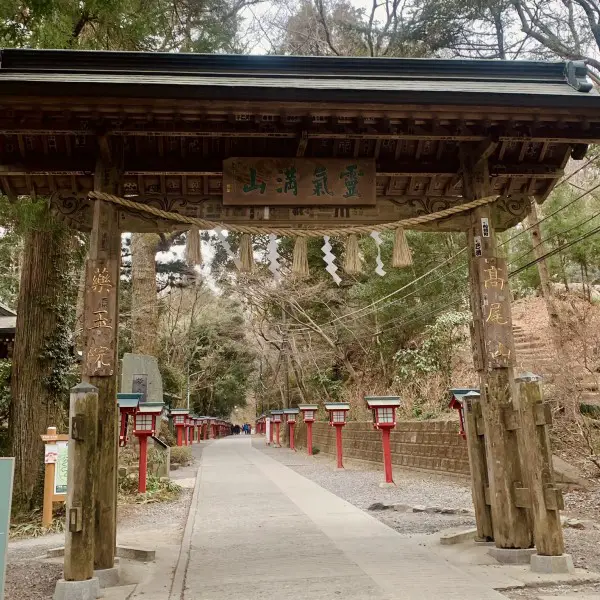
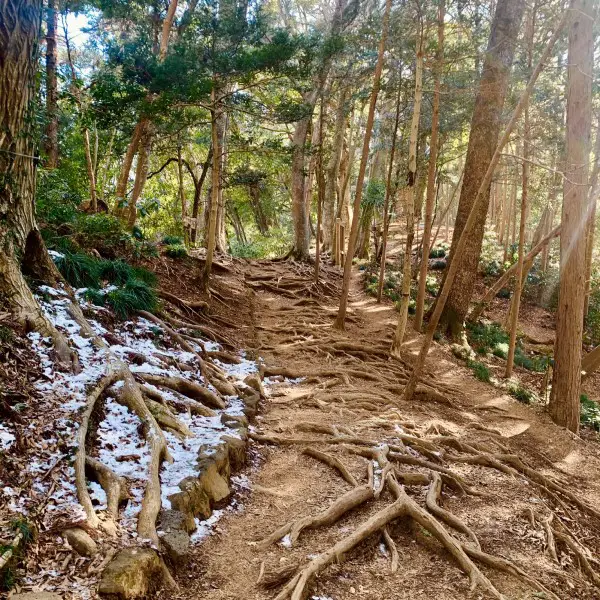
Visiting Mount Takao, worshipped for over 1000 years, is not only a great way to spend time in nature and escape the hustle and bustle of the city. It is also an occasion to learn a bit about ancient Japanese beliefs. While hiking Mount Takao, you will probably encounter local tourists stopping at the Yakuoin temple near the summit. Praying to the Shinto-Buddhist mountain god (tengu) with a very distinctive long nose is supposed to ensure good fortune.
And if you fancy a longer mountain hike than Mount Takao, you might enjoy the multi-peak travers from Mount Takao to Mount Jinba (855 m), which can also be done as a day-trip from Tokyo. I have recently done this hike and I really loved it!
Here are all the details about this hike (you can also do just a part of it) MOUNT TAKAO TO MOUNT JINBA TRAVERS – AN EASY HIKE FROM TOKYO
Getting to Mount Takao from Tokyo
It only takes 50 minutes from Shinjuku Station to get to Mount Takao, located in Tokyo prefecture, about 50 km from the bustling city center. Take the Keio train (departing every 20 minutes, 390 JPY) and get off at Takaosanguchi Station at the foot of the mountain. JR PASS does not cover this journey.
3. MOUNT TSUKUBA: off-the beaten path

If you want to experience the off-the-beaten-path Japan, a day trip from Tokyo to Mount Tsukuba has it all. Beautiful nature and a cable car ride (of course), historical shrines, delicious local food, ancient legends and… beautifully blooming plum trees, if you come in February.
Mount Tsukuba (877 m), one of the “100 Most Famous Japanese Mountains” (probably the easiest to climb), is especially famous for its two characteristic peaks shrouded in ancient legends: Nyotai-san (lit. “female body” – 877 m) and Nantai-san (lit.”male body” – 871 m).
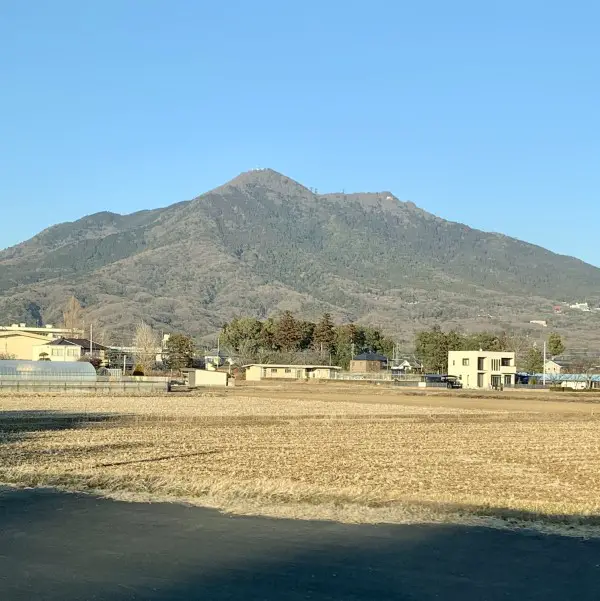
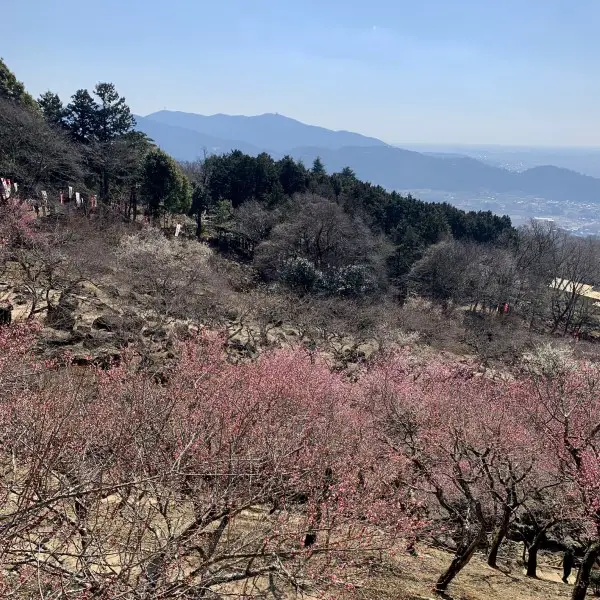
Mount Tsukuba highlights:
- This day-trip from Tokyo is a perfect outdoor adventure for all nature lovers. Some of you will be happy to take a cable car or a ropeway and follow an easy forest trail to the shrine. Hiking enthusiasts will definitely appreciate rocky little summits and relatively steep descent.
- Amazing view from the summit extending up to Tokyo’s Skytree and Mount Fuji in good weather.
- Tsukubasan-Jinja – a magical Shinto shrine with almost 3000 years of history!
- A local version of udon noodles (Tsukuba udon with meatballs) prepared by a Japanese “grandma” in one of the cosy little restaurants on the top of Mount Tsukuba. It is such a genuine Japanese experience!
- The Plum Blossom Garden, especially beautiful in February when plums are blooming.
Getting to Mount Tsukuba from Tokyo
You can reach Mount Tsukuba in Ibaraki Prefecture, located less than 100 km north-east from Japan’s capital, in 2 hours from Tokyo Station or Shinjuku (~2000 JPY). Although it requires taking metro, train and a shuttle bus, it’s not that difficult as it might seem:
- Metro to Akihabara Station;
- Tsukuba Express: 45 min from Akihabara Station to Tsukuba Station (1210 JPY);
- 35min from Tsukuba Centre (3min walk from Tsukuba Station) to Tsukubasan-Jinja Shrine (740 JPY).
Alternatively, renting a car is a good option for this day trip from Tokyo. Driving from central Tokyo takes 80min and the total cost (car rental, tolls & petrol) was about ~12000 JPY, as that’s what we did.
4. LAKE KAWAGUCHI: best for Mt. Fuji views but not only

Lake Kawaguchi, one of the Fuji Five Lakes, is the best day-trip from Tokyo for close-up Mount Fuji views, which can be easily arranged. The beautiful lake paired with the iconic peak is something very unique. But that’s not it! There are many interesting attractions around the lake. Here are some examples.
The 20 km shoreline of Lake Kawaguchi is dotted with beautiful viewpoints. There are also plenty of places to eat, interesting museums, beautifully- kept parks and various spots to relax. Exploring Kawaguchi Lake by bicycle is a good option.
The Mount Fuji Panoramic Ropeway from the shore of Lake Kawaguchi in just a few minutes reaches the observation deck at an altitude of over 1000 metres. The terrace offers panoramic views of the lake and, of course, Mount Fuji. These pictures will probably say more than any of my words.
The Mount Fuji Panoramic Ropeway
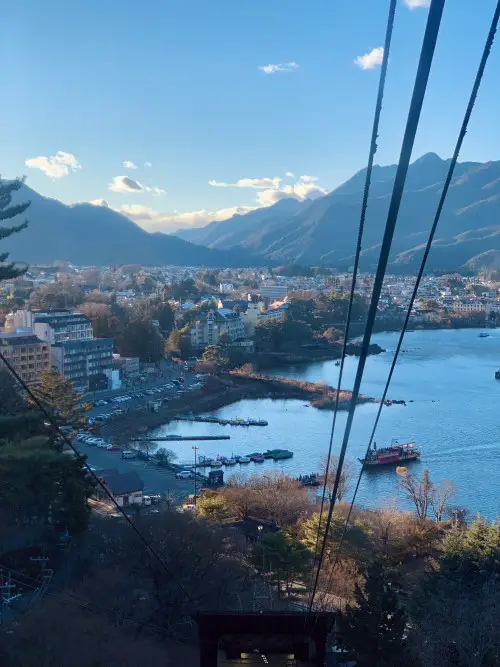
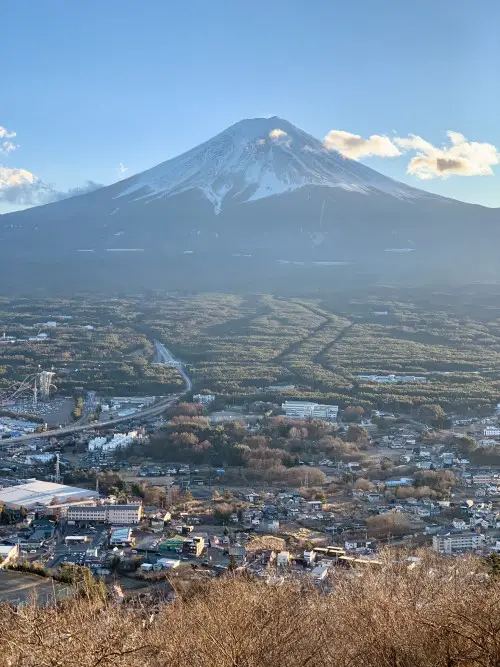
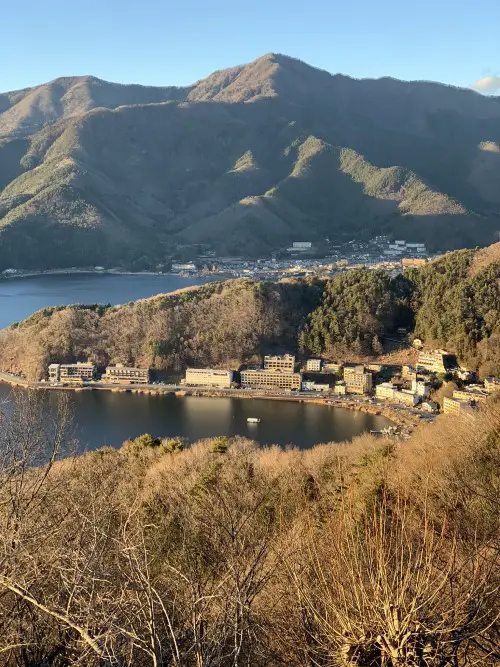
The Chureito Pagoda and snow-capped Mount Fuji peak in the background is one of the most popular images that will probably come to your mind when thinking about Japan.
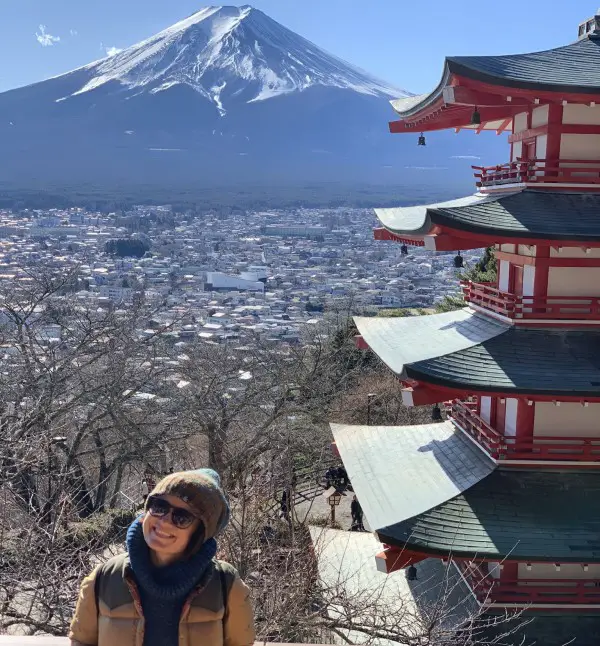
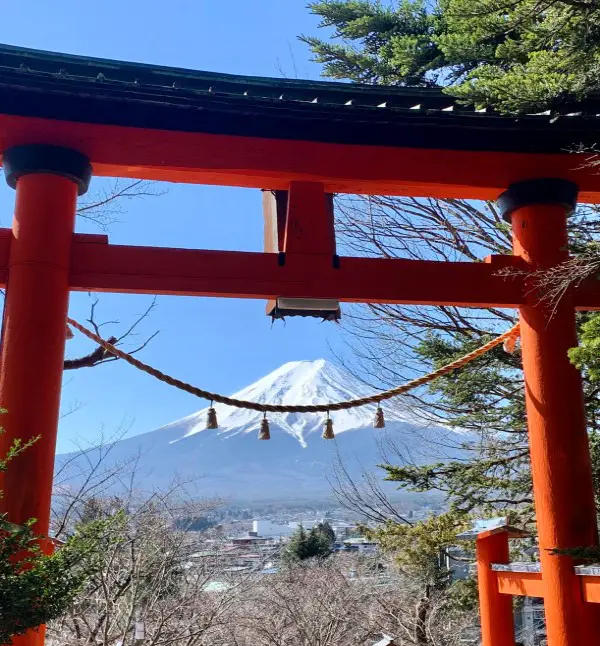
You can also try local food and sake at Lake Kawaguchi. The area is particularly famous for the traditional hōtō soup from Yamanashi Prefecture, and the water from Mount Fuji is great for sake brewing. Ide Sake – a small, family-owned brewery that has been producing sake for 21 generations, offers guided tours (in English) to learn about the sake production process and, of course, taste the famous Japanese drink.
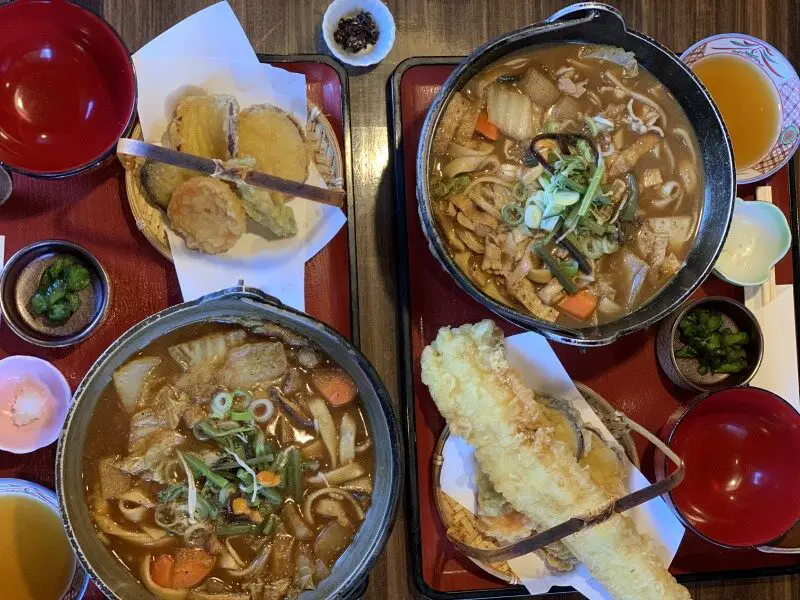
Although you can visit Lake Kawaguchi as a day trip from Tokyo, if you only have the chance, try to stay overnight. More about the 2-day stay at Lake Kawaguchi in my separate blog post:
HOW TO FALL IN LOVE WITH MOUNT FUJI – LAKE KAWAGUCHI IN 2 DAYS
Getting to Lake Kawaguchi from Tokyo
Lake Kawaguchi, located in Yamanashi Prefecture, lies 120 km west from Tokyo. The easiest way to get there from Tokyo is by bus. Direct buses depart from Tokyo Station every hour and a traffic-free journey should take 2 hours (2000 JPY). For more information and reservations go to Japan Bus Online.
More information on how to travel to Lake Kawaguchi by train HERE.
5. NOKOGIRIYAMA: dramatic views & the Big Buddha

Although Mount Nokogiriyama (lit. Saw Mountain) is only 330m high, it is full of mysterious sites. Besides you can take a cable car to the top, which is always fun! The attractive Nihonji temple with 1,300-year history situated on the mountain slopes and the very characteristic sawtooth-shaped viewpoint (Hell Lookout) on the rocky cliff at its peak are the main attractions of Mount Nokogiriyama.
Treasures of the extensive Nihonji temple grounds, connected by a network of walking path include:
- 31-metre tall Daibutsu (Big Buddha – twice the size of the Buddha in Kamakura!) dating back to the 1780s, sitting peacefully about halfway up the mountain;
- 1,500 mysterious stone statues of Buddhist disciples (rakan), carved over 20 years by the same master craftsman who created the Big Buddha;
- A 30-metre-tall statue of Hyaku-Shaku Kannon, depicting the Buddhist Goddess of Mercy.
The views of Boso Peninsula, Tokyo Bay as well as Mount Fuji and the Tokyo Skytree on particularly clear days can be enjoyed from the summit.
Getting to Nokogiriyama from Tokyo
Due to its more remote location, getting to Nokogiriyama on the coast of the Boso Peninsula in Chiba Prefecture is a bit more complicated, but it’s worth it!
It is a 2-hour journey from Tokyo Station to Hama-Kanaya Station, from where you walk 10 minutes to the Nokogiriyama Ropeway. The most convenient connections are:
Train from Tokyo Station: Sobu Line + Uchibo Line or Shiosai Line + Uchibo Line;
Bus + train: bus from South Yaesu Exit (Tokyo Station) to Kimitsuekiminamiguchi + train from Kimitsu Station (Uchibo Line) to Hama-Kanaya
It takes about 90 minutes by car from central Tokyo via Tokyo Bay Aqua-Line – made up of a bridge and a tunnel on the Tokyo Bay. Almost 10-km tunnel under the bay is the fourth-longest underwater tunnel in the world.
6. MOUNT ONO: pleasant hike with Mt.Fuji views

In good weather, Mount Ono (722 m) offers truly amazing views of Mount Fuji. A short trip to Mount Ono is a perfect example of how beautiful and easily accessible mountain adventures from Tokyo are. Almost the entire country is dotted with similar trails. Besides, many peaks in the Kanto region offer stunning views of Mount Fuji. This hike is much less commercial than for example Mount Takao. There is no cable car here, no historical sites, temples or souvenir shops, so there are no crowds either. All you come here for is nature.
Mount Ono hike details
The 12-kilometre route is quite easy, suitable for beginner hikers. The trail, which is a loop, starting at Yamakita station and ending at Yaga station, takes about 3 hours (2 hours up + 1 hour down). Follow signs for 大 野山 (Mount Ono) up and 谷 峨 駅 (Yaga Station) on your way down. Both at the top and slightly below on the way down there are comfortable benches to enjoy Mount Fuji views.
The route initially runs along a paved road and only after about an hour turns right into a forest path. The final part of the hike – the stairs to the plateau below the summit – is the steepest. But don’t worry too much, it’s still relatively easy and… the views are worth it!
Getting to Mount Ono from Tokyo
Mount Ono, located in Kanagawa Prefecture, is about 100 km west of Tokyo, north of Hakone. The train journey from Shinjuku to Yamakita Station takes 100 minutes. Take the Odakyu railway towards Odawara and change at Shin Matsuda to the Gotemba line.
LOCATIONS MAP
Although I have been living in Tokyo for almost 3 years now, I’m still discovering the secrets of this enormous city where can’t get bored. Tokyo is so fascinating! On the other hand, it might sometimes feel a bit overwhelming because of the omnipresent concrete and buildings. If so, I hope that this list of short-day trips from Tokyo for nature lovers will inspire you to get out of the city and reset.


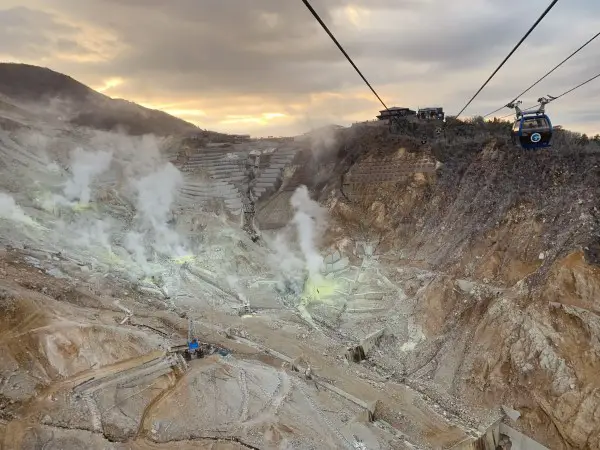



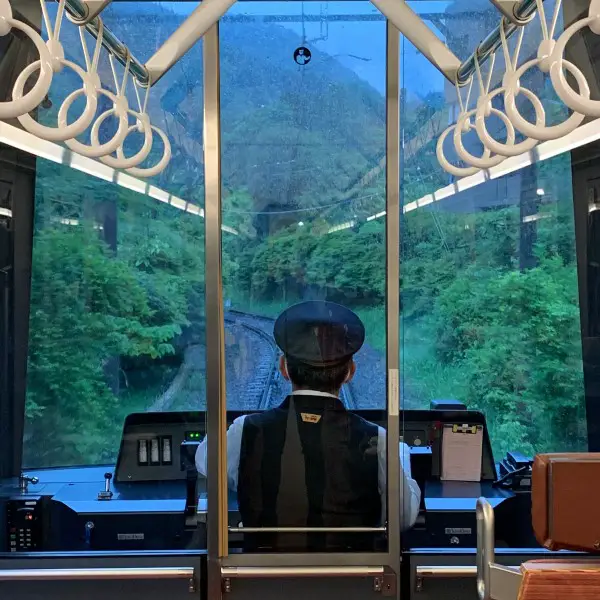





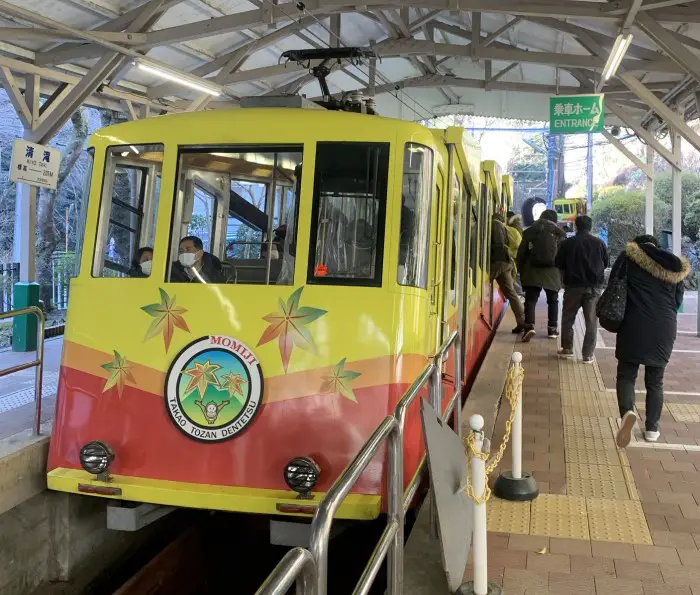




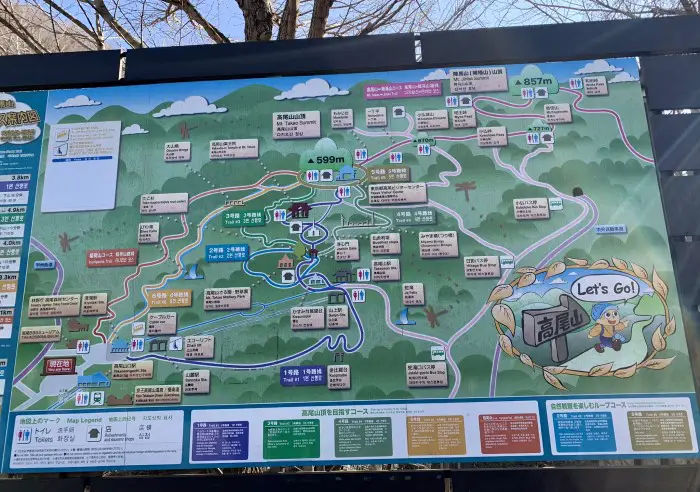
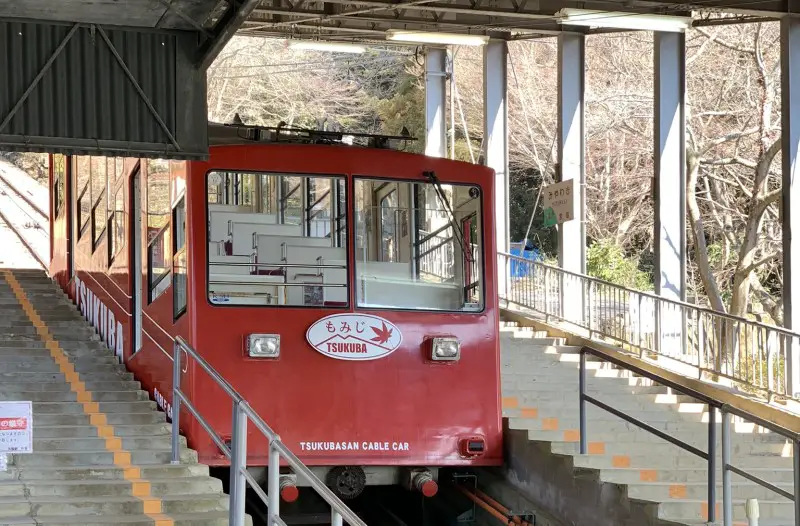







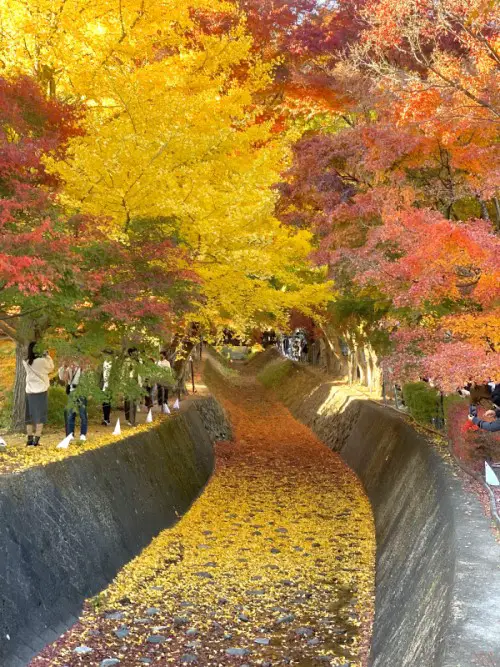





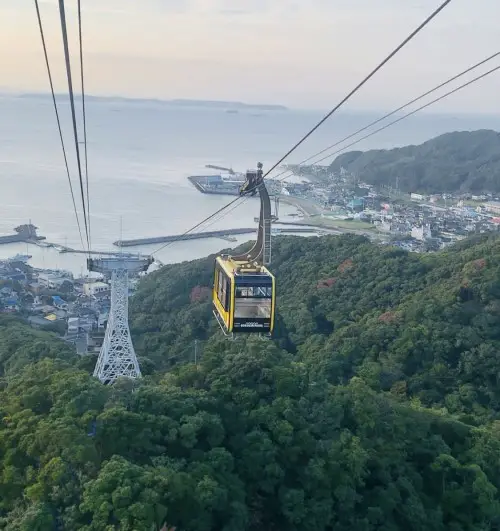








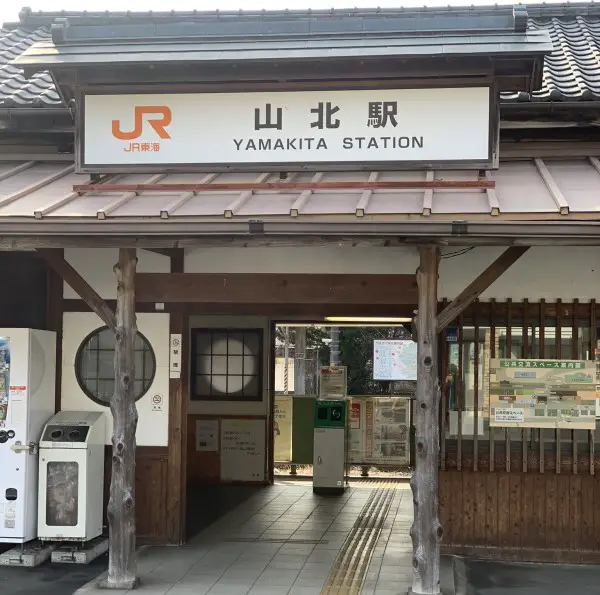











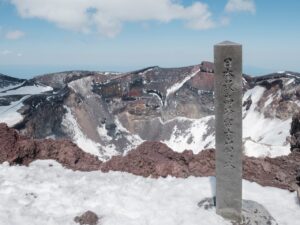
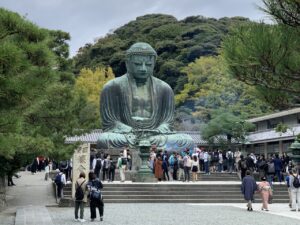
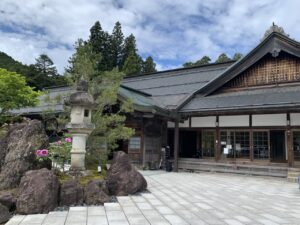
Thanks for the great ideas. I’m saving it for our upcoming family vacation to Tokyo this spring – our 2nd time!
hi Ray, I’m so glad you like it 🙂 Enjoy your holidays! Japan in spring is so beautiful!
Thanks for all these tips, I think i will come back to your blog for more infos as I am about to explore Tokyo and Japan for a few years 🙂
Hi Kristina, thank YOU for your reading my blog 🙂 I love your plan – a few years might be enough to explore what Japan has to offer! There is so much… Enjoy your travels!
This is fantastic! I’m heading to Tokyo next week for the first time, and was searching for things to do. Definitely going to head to Hakone now, and maybe one or two other spots. Thanks!!
Hi Alan, I am so happy you’ve liked and found my blog useful. Thank YOU 🙂 Happy travels!